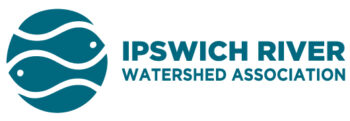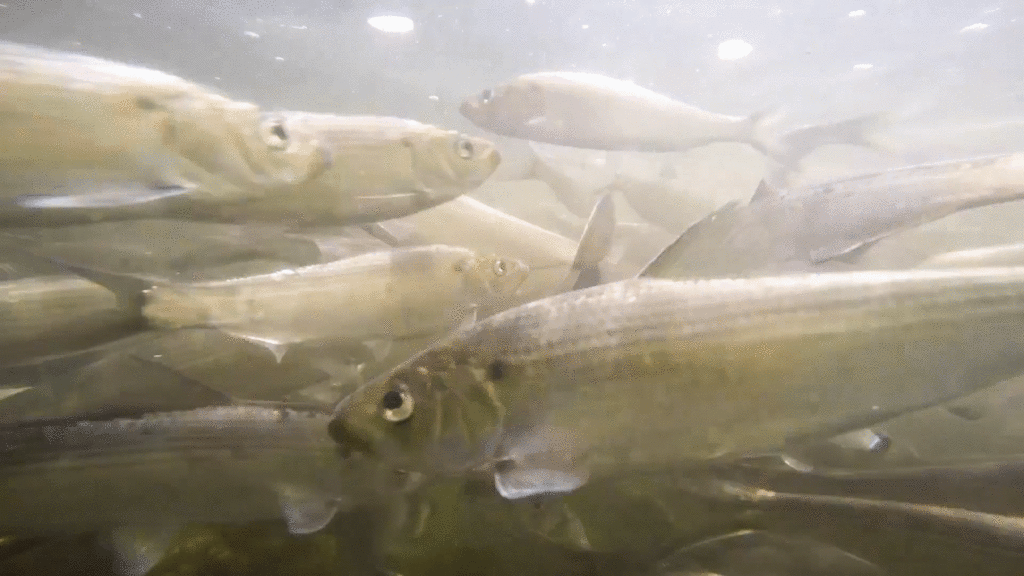The Ipswich River is cluttered with dams and outdated culverts which fragment habitats and impede fish passage. It’s why we are working systematically along our river to improve migratory fish passage by updating and improving fishways and removing dams where we can. In 2022, IRWA and other project partners received a federal grant to address fish passage at five dams. For the first time ever, that means that every dam on the main stem of the Ipswich River (plus one on the Parker River) has a plan in progress to improve fish passage and the health of the river.
Recently we celebrated a new fishway that’s adjacent to the Howlett Brook Dam. Meanwhile we’re in the middle of a public information campaign to take down the Ipswich Mills Dam. The Mills Dam is a particularly contentious issue as people struggle with the changes dam removal will bring with it. So the question is – why wouldn’t we install a new state of the art fish ladder instead of removing the dam?
The Massachusetts Division of Marine Fisheries (DMF) manages the state’s commercial and recreational saltwater fisheries and oversees other services that support the marine environment and fishing communities. So we took a deep dive with Ben Gahagan, Diadromous Fish Biologist at DMF to see what they think of the current state of the Mills Dam fish ladder and how it is different from Howlett Brook.
What are diadromous fish and why are dams so problematic for them?
A diadromous fish is a fish that must move between fresh and saltwater to complete its life cycle. The most iconic example of this is the anadromous salmon, that is born in freshwater but migrates to and lives most of its life in the ocean. It then returns to freshwater to spawn as an adult. Catadromous fish do just the opposite; they are born in saltwater but live most of their lives in freshwater. Moving between these environments is very difficult on their bodies and they typically have a limited time frame to make that journey. Because of this, the delay a dam or a sequence of dams with fishways can cause as fish search for the fishway entrance or make multiple attempts to ascend or descend can have real effects on a population. The American eel is the only catadromous fish in North America. Because of this fascinating life history diadromous fishes are especially vulnerable to infrastructure like dams and culverts. To have viable populations of diadromous fish we need to get them in and out of rivers and ponds quickly and safely.
What is the current state of fish passage at the Ipswich Mills Dam?
While no formal data for the Ipswich Mills Ladder exist, based on studies of these ladders in other locations they typically do an adequate job of passing river herring upstream with acceptable levels of efficiency and minimal delay for a ladder. They have not been shown to effectively pass American eel, American shad, or most native fish species. The ladder does not provide any type of safe or effective downstream passage.

Why is a fish ladder the right choice for Howlett Brook Dam but not for the Ipswich Mills Dam?
State regulations require that dam owners provide passage for sea-run fish. DMF works with dam owners of all varieties, including private landowners, municipalities, and corporations to achieve the best passage outcome possible at a location. In most cases, dam removal is the best option from both a passage and cost-effectiveness or liability perspectives. Ipswich Mills and Howlett Brook both present opportunities to improve the watershed and access for migratory fish (the primary DMF perspective) with different constraints, benefits, and potential outcomes. Despite the differences, it is important to acknowledge that whatever benefits Howlett Dam enables for fish will in part be determined by what the Town decides at Ipswich Mills, as it is one of two dams between the ocean and Howlett Brook – and any fish wanting to make it up Howlett Brook must pass both.
Ipswich Mills is a larger and higher dam built of more “permanent” materials than Howlett Brook. Dam removal is especially beneficial in lower main-stem habitats like Ipswich Mills. A new, large (and very expensive– more expensive than removal) nature-like fishway at this location may pass many fish species at some level of effectiveness and delay in passage but will not provide the full suite of passage improvements and additional ecological benefits, like reduced water temperature and increased dissolved oxygen content that dam removal would. A fishway is also a structure that must be operated and maintained, adding to the costs the owner (in this case the Town) must allocate in time and resources, in addition to the costs for the still-existing dam. A fishway that is not operated and maintained well will not pass fish well. Dam removal removes all operations and maintenance costs and potential issues for passagewhile providing the best possible outcome for the ecological health of the river and migratory fish like river herring, eel, lamprey, and potentially American shad in the future.
Howlett Brook Dam is a concrete and wood dam that blocks passage to habitat that is more limited than the mainstem Ipswich in the sense that it has far less area to support spawning and rearing for migratory fish. Here, the private landowner valued the impoundment over any ongoing operations, maintenance, or liability in the future. Importantly, the ladder will not aid American eel, so further efforts remain for DMF to better understand the need for eel passage at this site and potentially provide some sort of ramp. While the full benefits of a dam removal will not be achieved here, the ladder is a positive development and opens hundreds of acres of potential habitat for alewife and lamprey. Also, building a fish ladder at Howlett Brook does not rule out dam removal in the future if the opportunity arises – it just means some benefits are realized now, with potentially more in the future.
As you can see – it’s complicated! What is clear is each site is unique. Between ownership, liability factors, and the changing range of fish traveling the river at various points along the river – there is no one-size-fits-all solution for fish passage. Here at IRWA our single sustained mission is to protect and restore the Ipswich River and its watershed. As part of that mission we will continue to do the complex work of restoring fish populations to the Ipswich River one fishway or dam removal at a time.
Pictured above: Ben Gahagan at the Howlett Brook Fishway in Topsfield. Photo by Alison Colby-Campbell.

